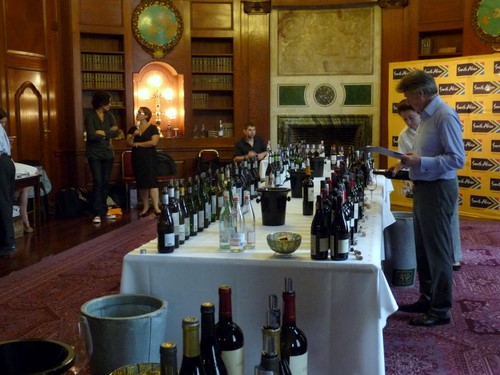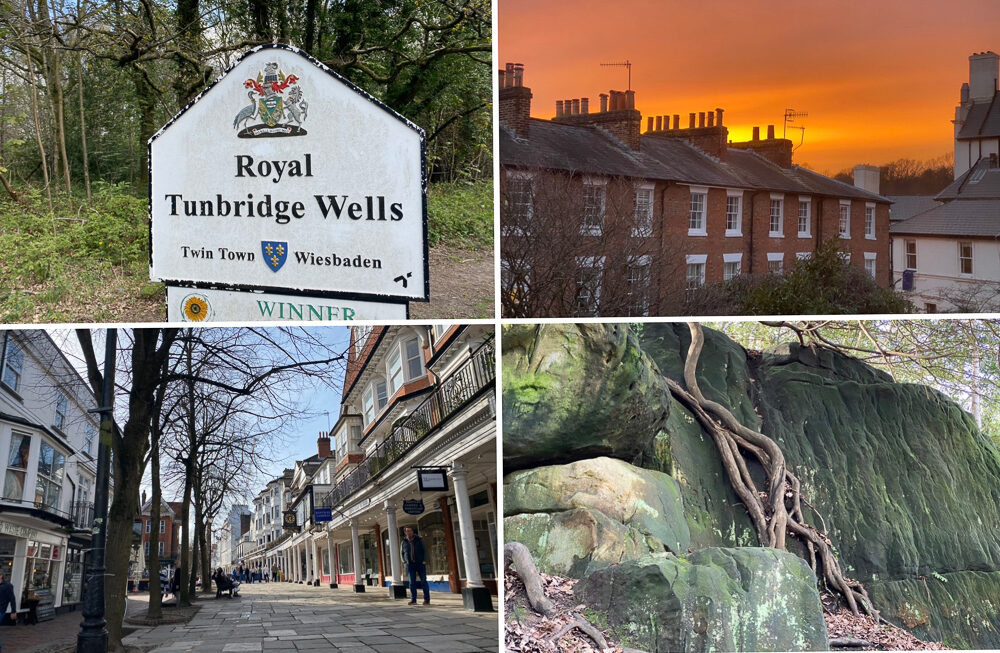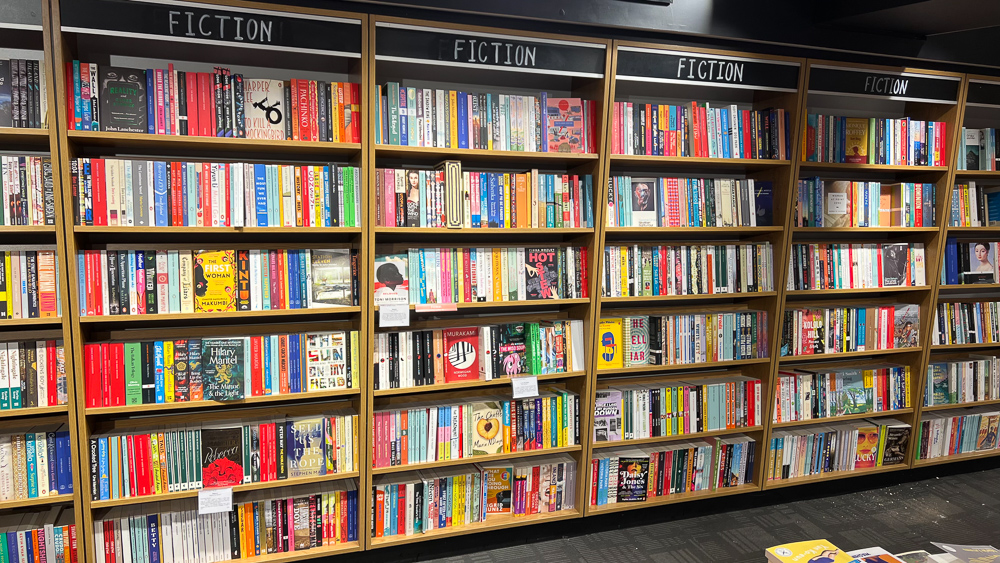
Brilliant tasting today at the South African High Commission in Trafalgar Square. It was titled ‘taste the earth’, and the idea was to show wines where there was link between the terroir and the flavour.
160 wines were shown, which is, of course, too many to taste all of them and make sensible, serious judgements. But this isn’t a problem, because I can happily attend a tasting like this and taste a bit selectively, and still come out with lots of useful information.
I know I go on about the wine trade’s obsession with tasting over drinking, but there is a place for big tastings like this. There were lots of serious high-end wines here today that I just wouldn’t normally have access to. And I have flagged lots of wines that I’d like to return to and get to know better at some stage.
Aside from the ‘taste the earth’ aspect (it proved to hard to get to the issue of terroir when stylistic choices on the part of the winegrowers seemed to be the key determinant in wine flavour), there were some really interesting wines on show. Many of South Africa’s top producers were represented; I got the chance to taste many wines I’d heard about, but which I hadn’t tasted before.
I seems a bit mean to pick out just a few wines, but I will. Klein Constantia Sauvignon Blanc 2009 showed impeccable balance; Reynecke Sauvignon Blacn 2009 was equally good, if a little more pungent and intense. Steenberg Magna Carta 2007 was unusual but complex, blending together Sauvignon and Semillon.
Of the Chenins, SAAM Middleburg 2009 and Badenhorst Secateurs 2009 were both brilliant and affordable. More serious were the Radford Dale Land of Hope 2008, Raats Family 2008 and Ken Forrester FMC 2008 (much more refined and pure this year).
White blends impressed. Vonderling Babiana 2007, Lammershoek Roulette 2008, Naude White 2008 and Tokara Directors Reserve 2008 were all very good.
I’ve never thought much of South African Pinot Noir, but four were really good: Chamonix 2009, Radford Dale Freedom 2009, Meerlust 2008, and Paul Cluver Seven Flags 2006.
Of the Bordeaux-styled reds, there were some serious efforts. Rust en Vrede Cabernet 2006 and Rustenberg Peter Barlow 2006 were great. De Toren Fusion V 2007 had lovely freshness and concentration. Tokara Director’s Reserve Red 2006, Kaapzicht Steytler Vision 2006, Rust en Vrede Estate 2006, Jordan Cobbler’s Hill 2006, Waterford The Jem 2006, Ernie Els Stellenbosch 2005 and Reynecke Cornerstone 2008 were all pretty serious.
The best Pinotages? Flagstone Writer’s Block 2007 and Kaapzicht Steytler 2007 both impressed.
Syrahs were strong. Glenelly Estate 2009 got my value vote, with lovely purity. Rudi Schultz 2007, Waterford Kevin Arnold 2007 and Fairview The Beacon 2006 were very nice.
I made quite a few new discoveries, and came away impressed. The South African wine scene is moving fast. Blink, and you’ll miss it. There’s real progress here.
12 Comments on A superb South African tasting


Hi Jamie, how successful was the ‘taste the earth’ theme? How easy was it to establish the links between terroir and flavour in the wines?
The Kaapzicht Steytler Vision 2006 is not a Bordeaux-styled red, but a so-called Cape Blend and includes 35% Pinotage. Even if you are not quite as biased against Pinotage as many other British writers, the Vision is another good example of why Pinotage and Pinotage-influenced wines should be tasted blind. Even South Africans admit that there’s a whole lot of crap Pinotage out there. Nobody should allow that to make them miss out on the exceptional stuff… Those Visions mature into real beauties – and it’s got nothing to do with their Merlot content!
Shame we did not know about this as would have loved to have put our wines in.
Do you know who organised this Jamie—–WOSA perhaps?
Hi Jamie
Just a quick note to follow on to Kwispidoor’s post. The Waterford The Jem is not a Bordeaux blend either. They have all manner of varietals in there, including Shiraz, Sangiovese, Barbera, Mourvedre and also 3 Bordeaux varietals. It is interesting that amongst the red blends the super premium priced wines showed best.
Gareth, I don’t think the taste the earth theme really worked, but it was still a very good tasting with some high-calibre wines
Kwispedoor – point well taken. This is the best cape blend I’ve tasted. Is the category still active?
Keith, WOSA organized it – would have loved to have seen the Mullineux wines in there, but I already know how sensationally good they are.
With regard to the Cape blend point above, Jamie. ABSA have just recently announced the expansion of their very successful Top 10 Pinotage competition and there will be a Cape Blend Competition added to the calender next year. Minimum requirement is 30% Pinotage in the blend, maximum 75%. So it would seem that they see a future in it, and with the backing that they have given to the Top 10 over the years, I would expect that their impetus will kickstart the ‘category’, irrespective of its merits.
Is it possible to purchase the Mullineux wines in the UK?
You write “There’s real progress here”. Do you think there is a point (vintage-wise) from where on this is really evident?
The most recent vintage I’ve drunk respected South African reds from is 2003 and even though there is a restaint I appreciate, there’s still that nigly ‘South African earthiness’ (as CT users often describe it) spoiling the picture.
As a huge fan of New World cabs tired of the sweet, overworked examples out there, I’d be happy to hear this is still being managed differently in South Africa not only in the cellar but also in the vineyard!
Yes – Swig or The Wine Society are good bets, but you may have missed them by now.
I think Jeroboams in London do have the Mullineux wines as well.
Hi, Jamie
To answer your question and follow Chris’s comment:
“Cape Blend” is not an official category, as such. There’s too much bickering in the industry, mainly around two points:
1. Some wine makers that make, for instance, a Cab/Shiraz blend insist that theirs is also a Cape Blend, being a blend from the Cape. I find them a bit belligerent, as those blends are already Australia’s forté. Pinotage is the ONE unique grape that we have that’s planted in large enough quantities and capable of making superb wines, provided they’re handled properly.
2. Those that insist Pinotage should form part of an authentic Cape Blend, disagree over the minimun percentage of Pinotage that should be required. This ia a more tricky issue, as there’s some stunning blends that contain small, but very influential bits of Pinotage.
I’m hoping the new ABSA competition is at least a step in the right direction.
Hi Jamie
Great to read your blog on “Taste the Earth” recently. How did the Cloof stack up in your opinion? as it would be good to get some feed back to the winery.